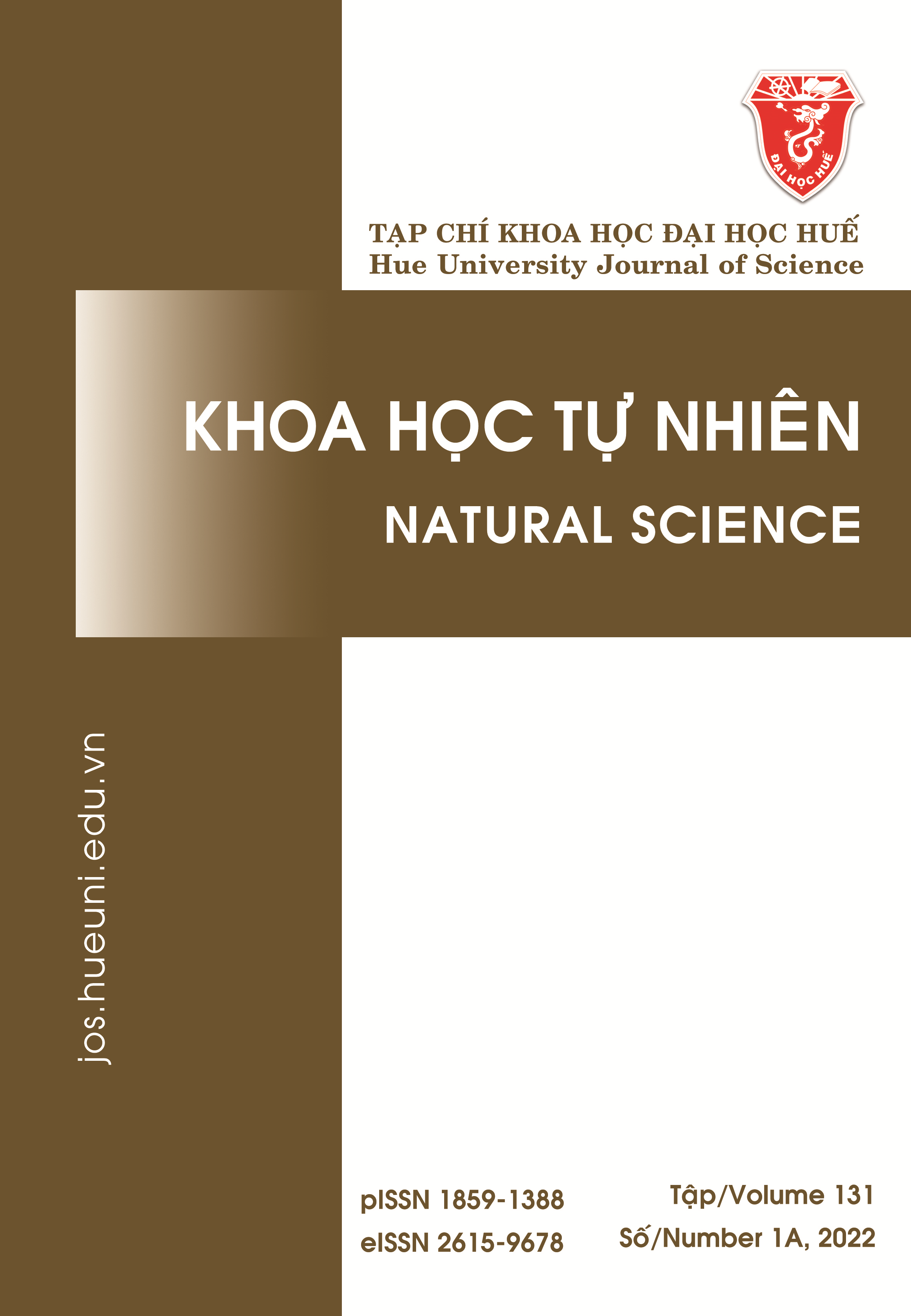Tóm tắt
Trong nghiên cứu này, chúng tôi trình bày phương pháp điều chế dung dịch nano bạc (Ag) từ bạc nitrate (AgNO3) sử dụng dịch chiết lá vối làm tác nhân khử và alginate là chất hoạt động bề mặt. Chúng tôi khảo sát ảnh hưởng của nồng độ AgNO3, tỷ lệ thể tích giữa AgNO3 và dịch chiết lá vối và thời gian phản ứng đến quá trình tạo nano Ag. Điều kiện tối ưu để tổng hợp nano Ag sử dụng dịch chiết lá vối gồm nồng độ AgNO3 4 mM, tỷ lệ thể tích Vdịch chiết /VAgNO3 = 4:100, nồng độ alginate 1%, thời gian phản ứng 45 phút tại nhiệt độ phòng. Dung dịch nano Ag thu được có màu vàng nâu đồng nhất. Kết quả đo TEM, SEM, XRD và FT-IR của các mẫu cho thấy nano Ag đã được tổng hợp thành công; hạt nano có dạng hình cầu, cấu trúc đồng đều với kích thước hạt khoảng 19,0–26,6 nm.
Tài liệu tham khảo
- Alexander JW. History of the medical use of silver. Surgical infections. 2009;10:289-292.
- Eckhardt S, Brunetto PS, Gagnon J, Priebe M, Giese B, Fromm KM. Nanobio silver: its interactions with peptides and bacteria, and its uses in medicine. Chemical reviews. 2013;113:4708-4754.
- Chernousova S, Epple M. Silver as antibacterial agent: ion, nanoparticle, and metal. Angewandte Chemie International Edition. 2013;52:1636-1653.
- Dong XY, Gao ZW, Yang KF, Zhang WQ, Xu LW. Nanosilver as a new generation of silver catalysts in organic transformations for efficient synthesis of fine chemicals. Catalysis Science & Technology. 2015;5:2554-2574.
- Matsuhisa N, Kaltenbrunner M, Yokota T, Jinno H, Kuribara K, Sekitani T, Someya T. Printable elastic conductors with a high conductivity for electronic textile applications. Nature communications. 2015;6:1-11.
- Chen D, Qiao X, Qiu X, Chen J. Synthesis and electrical properties of uniform silver nanoparticles for electronic applications. Journal of materials science. 2009;44:1076-1081.
- Neu HC. The crisis in antibiotic resistance. Science. 1992;257:1064-1073.
- Mapara N, Sharma M, Shriram V, Bharadwaj R, Mohite KC, Kumar V. Antimicrobial potentials of Helicteres isora silver nanoparticles against extensively drug-resistant (XDR) clinical isolates of Pseudomonas aeruginosa. Applied Microbiology and Biotechnology. 2015;99(24):10655-67.
- Chen X, Schluesener HJ. Nanosilver: a nanoproduct in medical application. Toxicology letters. 2008;176:1-12.
- DOI: 10.1016/j.toxlet.2007.10.004
- Khodashenas B, Ghorbani HR. Synthesis of silver nanoparticles with different shapes. Arabian Journal of Chemistry. 2019;12(8):1823-38.
- Loo YY, Chieng BW, Nishibuchi M, Radu S. Synthesis of silver nanoparticles by using tea leaf extract from Camellia sinensis. International journal of nanomedicine. 2012;7:4263.
- Chung D, Kim H, Ko J, Lee J, Hwang B, Chang S, et al. Microwave Synthesis of Silver Nanoparticles Using Different Pentose Carbohydrates as Reducing Agents. Journal of Chemistry and Chemical Engineering. 2018;12
- Rafique M, Sadaf I, Rafique MS, Tahir MB. A review on green synthesis of silver nanoparticles and their applications. Artificial Cells, Nanomedicine, and Biotechnology. 2017;45(7):1272-91
- El Sheekh MM, El Kassas HY. Algal production of nano-silver and gold: Their antimicrobial and cytotoxic activities: A review. Journal of Genetic Engineering and Biotechnology. 2016;14:299-310.
- Tran HV, Dai Tran L, Ba CT, Vu HD, Nguyen TN, Pham DG, Nguyen PX. Synthesis, characterization, antibacterial and antiproliferative activities of monodisperse chitosan-based silver nanoparticles. Colloids and Surfaces A: Physicochemical and Engineering Aspects. 2010;360:32-40.
- Tâm NTT. Tổng hợp và nghiên cứu tính chất quang của màng nano Ag/TiO2 ứng dụng trong quang xúc tác và diệt khuẩn [master's thesis]. Hà Nội: Trường Đại học Công nghệ; 2012.
- Kasthuri J, Veerapandian S, Rajendiran N. Biological synthesis of silver and gold nanoparticles using apiin as reducing agent. Colloids and Surfaces B: Biointerfaces. 2009;68(1):55-60
- Ghosh M, Mondal M, Mandal S, Roy A, Chakrabarty S, Chakrabarti G, et al. Enhanced photocatalytic and antibacterial activities of mechanosynthesized TiO2–Ag nanocomposite in wastewater treatment. Journal of Molecular Structure. 2020;1211:128076
- Shao Y, Wu C, Wu T, Yuan C, Chen S, Ding T, et al. Green synthesis of sodium alginate-silver nanoparticles and their antibacterial activity. International Journal of Biological Macromolecules. 2018;111:1281-92
- Dong Y, Zhu H, Shen Y, Zhang W, Zhang L. Antibacterial activity of silver nanoparticles of different particle size against Vibrio Natriegens. PLOS ONE. 2019;14(9):e0222322.

công trình này được cấp phép theo Creative Commons Ghi công-Chia sẻ tương tự 4.0 License International .
Bản quyền (c) 2021 Array




